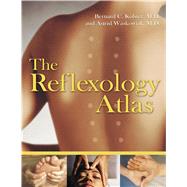A fully illustrated and comprehensive reference guide to the many different kinds of reflexology
• Provides reflexology treatments tailored for a wide variety of common health disorders
• Contains step-by-step instructions illustrated in full color
Of all the ancient practices that have been revived by the growth of alternative healing, reflexology is one of the most popular. It is easy to learn, can be applied anywhere, and is especially well-suited to self-treatment or the treatment of a partner. It is also excellent for the treatment of children. The Reflexology Atlas is the first comprehensive reference guide to provide an overview of and instructions for the many forms of reflexology--foot reflexology, hand reflexology, ear reflexology, head reflexology, and the total massage known as Shiatsu.
Reflexology provides a quick and effective treatment for many of the health disorders experienced by people in today’s world. Among the treatments included by Drs. Kolster and Waskowiak are reflexology techniques for allergies, joint problems, headaches, back pain, sleep disorders, and heart and circulatory problems. The Reflexology Atlas puts these techniques at your fingertips with its step-by-step instructions illustrated in full color.








